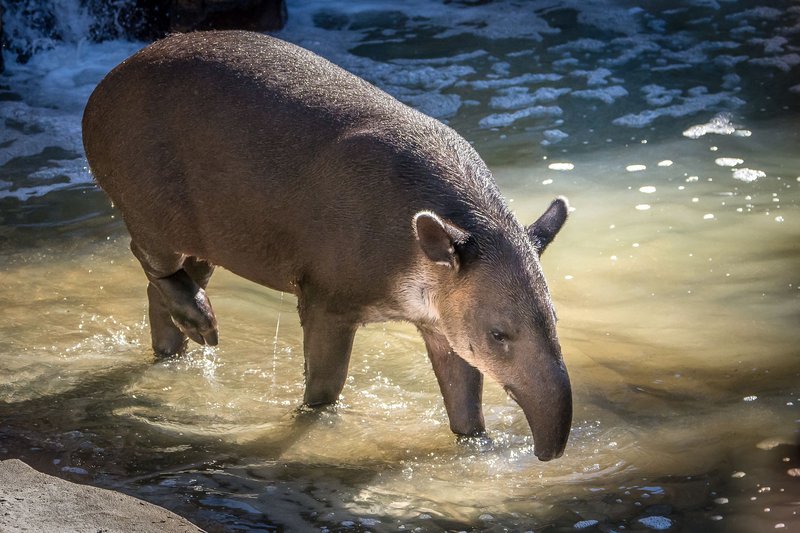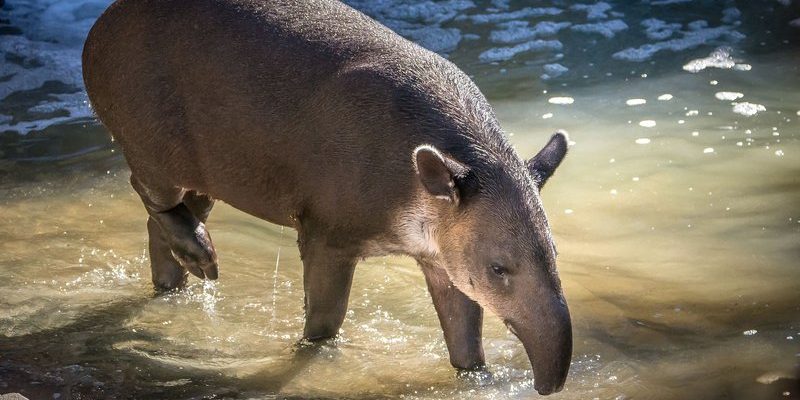
Imagine wandering through a lush rainforest, the sounds of wildlife all around you. Suddenly, you stumble upon a serene riverbank, where a Baird’s tapir is quietly sipping water. In this serene moment, you might start to reflect on how this animal has found its way into the hearts and stories of the people who share its habitat. From ancient legends to modern interpretations, the Baird’s tapir symbolizes various themes in culture and folklore that deserve a deeper look.
Mythical Significance in Central America
The Baird’s tapir has deep roots in the mythology of Central American societies. In ancient times, the tapir was seen as a symbol of strength and resilience. Many Mesoamerican cultures, including the Maya and Aztec, incorporated the tapir into their myths, often depicting it as a guardian of the jungle.
In these stories, the tapir often represented the connection between the physical world and the spiritual realm. It was believed that the tapir could navigate both land and water, symbolizing the journey between life and death. This dual ability made it a powerful emblem in rituals and ceremonies. The tapir’s sturdy form was associated with stability, while its gentle demeanor suggested a peaceful approach to life’s challenges, resonating with themes of balance and harmony in nature.
Folklore Tales
Many local legends depict the Baird’s tapir as a wise and benevolent creature. One popular tale goes like this: a young boy lost in the jungle made a wish to find his way home. Suddenly, a tapir appeared, nudging him gently. The boy followed the tapir through the dense foliage, and miraculously, he was led back to safety. This story highlights not just the tapir’s role in nature but its connection to human experiences, serving as a guide in times of trouble.
These tales often become more than just stories; they serve as reminders of the relationship between humans and nature. The tapir teaches us about the importance of respecting our environment and the beings that inhabit it.
Art and Representation
In addition to stories, the Baird’s tapir is beautifully represented in various forms of art throughout Central America. From pottery to paintings, artists often depict this creature in ways that celebrate its majestic presence. The unique features of its body—like its rounded form and distinctive coloring—make it an appealing subject for artists.
You might see tapirs portrayed in vibrant murals, where they blend into lush backgrounds of rainforest flora. These artistic representations not only showcase the tapir’s beauty but also raise awareness about wildlife conservation. By bringing this animal to life through art, communities can spark conversations about the need to protect their habitats.
Modern Interpretations
In recent years, the Baird’s tapir has also made its way into contemporary culture. Social media campaigns and environmental organizations use its image to promote wildlife conservation. For instance, you might come across a hashtag celebrating the Baird’s tapir on Instagram, complete with captivating photographs that draw attention to its endangered status.
These modern interpretations showcase how the tapir’s symbolism has evolved. Today, it stands not just as a mythological creature but also as a reminder of the urgent need for ecological preservation.
Symbolism in Native Traditions
For indigenous peoples, the Baird’s tapir goes beyond mere representation; it embodies various cultural values and beliefs. Many tribes view the tapir as a spirit animal, guiding individuals through their life journeys. It’s often associated with qualities such as patience, contemplation, and the ability to navigate difficult waters—both literally and metaphorically.
You might hear stories of shamans calling upon the tapir for guidance during rituals, believing it provides strength and wisdom. This connection to nature is deeply rooted in their spirituality, emphasizing the need to live harmoniously with the environment.
Environmental Awareness
The symbolism of the Baird’s tapir has become increasingly important in raising awareness about conservation issues. As habitats shrink and populations dwindle, communities organize events to celebrate the tapir and educate others about its plight.
These initiatives often include educational workshops and local festivals. Imagine an afternoon filled with music, dance, and storytelling—all centered around the tapir. Such events foster a sense of community and a shared responsibility to protect the natural world.
Tapir in Literature and Media
The Baird’s tapir also finds its way into literature and media, appearing in children’s books and documentaries. These portrayals help demystify the tapir and present it as an approachable and friendly creature. When kids read about the tapir’s adventures, it plants a seed of curiosity and empathy toward wildlife.
Books often highlight the tapir’s unique lifestyle, portraying its habits and habitat in a way that’s engaging and informative. Educational shows might include segments on the tapir’s role in the ecosystem, teaching young viewers about biodiversity and conservation.
Advocacy Through Storytelling
Storytelling remains a powerful tool for advocacy. When communities share the story of the tapir, they’re not just talking about a single species; they’re advocating for the preservation of entire ecosystems. Through storytelling, they connect past folklore with present challenges, emphasizing the importance of every creature in the web of life.
Audiences, both young and old, find that these narratives inspire action. Whether it’s creating awareness or participating in conservation efforts, stories about the Baird’s tapir can motivate people to contribute positively to their environment.
The Baird’s tapir is more than just an interesting animal; it’s a vibrant part of cultural folklore across Central America. From ancient myths to contemporary art, the tapir serves as a symbol of resilience, environmental harmony, and community spirit.
As we explore how the Baird’s tapir is represented in culture and folklore, we see a deep connection to nature and the pressing need for conservation. By shining a light on this remarkable creature, we remind ourselves of our responsibility to protect the rich biodiversity of our planet. So, the next time you hear about the Baird’s tapir, remember—its stories are not just tales of the past, but powerful narratives that shape our future.

